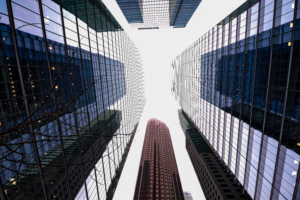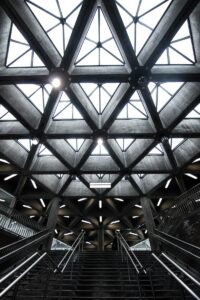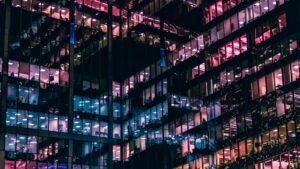The Artistic Elements of Architectural Photography

Architectural photography is a discipline where artistry meets precision. It’s a form of storytelling where buildings and structures become the characters, each with a unique narrative. As an experienced architectural photographer, I’ve honed my craft to not only showcase the physical beauty of these structures but also to unveil the stories and emotions embedded within them. In this blog, we’ll dive deep into the world of architectural photography, exploring how this art form goes beyond mere image capturing to embody the spirit of design and architecture.
The Artistic Elements of Architectural Photography
Architectural photography is an intricate blend of composition, lighting, and perspective. It’s about finding the perfect balance between technical skill and creative vision.
- Composition and Perspective: The key to capturing a structure’s essence lies in how it’s framed. Composition in architectural photography is about more than just symmetry; it’s about storytelling. Choosing the right perspective can reveal the character and intention behind a building’s design. Whether it’s the grandiose view of a skyscraper or the intimate feel of a historic cottage, each requires a unique approach to composition and perspective.
- Lighting: Light is the paintbrush of architectural photography. It can dramatically alter the mood and feel of an image. Natural lighting, especially during the golden hours, can bathe a structure in a warm, ethereal glow, while artificial lighting can be used to highlight or create dramatic effects, emphasizing certain design elements over others. The interplay of shadows and highlights can add depth and dimension, bringing the structure to life.
Detail and Texture: Revealing the Unseen
In architectural photography, the devil is in the details. Capturing the texture of materials, the intricacies of design elements, and the subtle interplay of light and shadow can transform a good photograph into a masterpiece. It’s these small details that often go unnoticed by the casual observer but can tell a profound story about the building’s history, purpose, and design philosophy. Close-up shots of textures, patterns, and materials bring the viewer closer to the architect’s vision, allowing them to appreciate the craftsmanship and thought that went into the building’s creation.
 Architectural photography comes with its unique set of challenges, from dealing with reflective surfaces to capturing the scale of large structures. Navigating these obstacles requires a combination of technical knowledge, creative problem-solving, and patience. For example, using polarizing filters can reduce reflections and enhance the sky’s color, while choosing the right time of day can minimize crowds in public spaces. Each challenge presents an opportunity to push the boundaries of what’s possible in photography, turning potential obstacles into elements of artistic expression.
Architectural photography comes with its unique set of challenges, from dealing with reflective surfaces to capturing the scale of large structures. Navigating these obstacles requires a combination of technical knowledge, creative problem-solving, and patience. For example, using polarizing filters can reduce reflections and enhance the sky’s color, while choosing the right time of day can minimize crowds in public spaces. Each challenge presents an opportunity to push the boundaries of what’s possible in photography, turning potential obstacles into elements of artistic expression.
Architectural photography is more than a profession; it’s a passion. It allows us to see the world through a different lens – one that appreciates the harmony of design, the beauty of structures, and the stories they tell. As we continue to explore and capture these architectural wonders, we not only document their existence but also celebrate their significance in our lives and landscapes.
Embark on a visual journey that transcends the ordinary. Reach out to explore how professional architectural photography can elevate your project, property, or portfolio.
